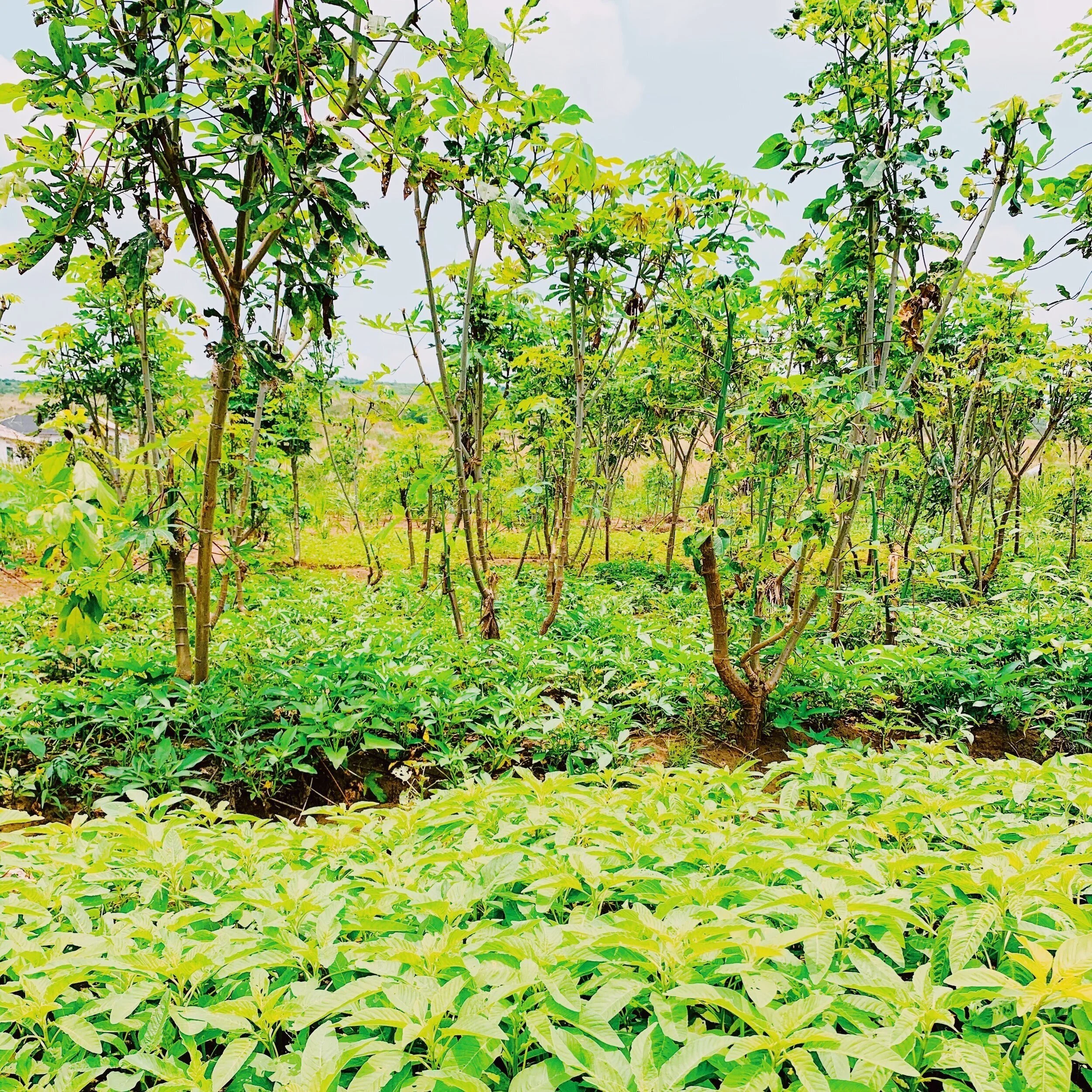Crops at Bolingo: How It’s Going
Disclaimer: Peas beware; this post may contain one too many vegetable puns. Lettuce begin.
Before children, foster moms, a playground, or buildings were at Bolingo Village, there was just empty land. One of the very first things we started doing on that land was farming crops. We hired Papy, who is still our head farmer today, and told him to make the farmland as raddishing as possible. And he is kale-ing it!
At the forefront of our farm plans has always been providing adequate nutrition for the children of Bolingo Village. Secondary to that is creating commerce, through an excess of crops. Through trial and error, hiring three new farmers, an irrigation system, and many strategic planning sessions, we think we’ve concocted an un-BEET-able equation for both an abundance of nutrition and potential for sustainable income.
We have three main crops that we are mass-producing; cassava, corn, and peanuts. What we’ve found is that it’s better to choose a few crops that are desirable in the community, get good at farming them, farm a lot of them, and have a high amount of excess to sell. I know what you’re thinking, does cassava, peanuts, and corn provide enough nutrition for the kids of Bolingo? The answer is no. While they do offer a good variety of nutritional benefits; iron, folate, B vitamins, and potassium, to name a few, they are still missing some essential nutrients that our kiddos need to have a well-balanced diet.
That’s where our “little farm” comes in. In addition to the acres of farmland filled with our three main crops, we also have a designated area of land that contains smaller amounts of many different crops, like sweet potatoes, cucumber, spinach, amaranth, green pepper, sorrel, and tomatoes. The purpose of this area of farmland is strictly to feed the families of Bolingo Village and fill in any nutritional gaps (not to mention add variety to their little taste buds!).
With this combination of farming, we have the best of both worlds. From a nutrition standpoint, our kids are “eating the rainbow,” as we like to say in the nutrition world. Once our fruit trees begin to produce (any day now!), they’ll have access to foods in every color, providing the optimal combination of vitamins, minerals, and phytonutrients that their bodies need to flourish. From an economic standpoint, our farmers can focus on perfectly producing just a few crops, making the growing and selling process as efficient as possible. Suffice to say, this is an a-maize-ing recipe for success!

